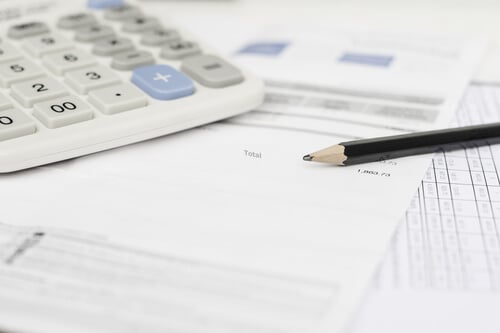Discover what standing charges are, and why they’re added to your energy bills. Find out if it’s possible to avoid standing charges for electricity and gas by switching to a different tariff.

What is a standing charge?
A standing charge is a fixed-rate cost that is added to your energy bill every single day, even if you don’t use any energy. There are separate standing charges for gas and electricity.
The charge is designed to cover the costs of supplying your home with gas and electricity. This includes transport costs and administration charges. The gas and electric standing charges also help pay for government environmental and social schemes.
How much are standing charges?
Check your latest energy bill to see how much your gas and electricity standing charges are. Read our guide to reading your energy bill if you can’t find it.
Standing charges vary depending on your supplier, your tariff and where you live. This is because it costs more to transport energy to certain parts of the UK. Standing charges are also applied separately to your gas and electric bills.
Ofgem puts a limit on how much each supplier can set its daily standing charges via the energy price cap. The following figures show the electric and gas standing charges for the next few months:
| Region | Electric standing charge 1 Jan - 31 Mar 2024 | Electric standing charge 1 Apr - 30 Jun 2024 | Gas standing charge 1 Jan - 31 Mar 2024 | Gas standing charge 1 Apr - 30 Jun 2024 |
|---|---|---|---|---|
|
UK average
|
53.35p per day
|
60.10p per day
|
29.60p per day
|
31.43p per day
|
|
London
|
38.50p
|
40.79p
|
29.60p
|
32.04p
|
|
South East
|
47.56p
|
56.90p
|
29.60p
|
30.94p
|
|
Southern
|
49.97p
|
63.33p
|
29.59p
|
30.78p
|
|
South Western
|
58.68p
|
67.19p
|
29.59p
|
30.97p
|
|
South Wales
|
54.21p
|
63.26p
|
29.59p
|
31.75p
|
|
Midlands
|
54.36p
|
62.73p
|
29.60p
|
31.45p
|
|
North Wales and Mersey
|
62.21p
|
67.04p
|
29.60p
|
31.89p
|
|
North West
|
51.79p
|
51.19p
|
29.60p
|
31.62p
|
|
Southern Scotland
|
62.08p
|
63.31p
|
29.60p
|
31.67p
|
|
Northern Scotland
|
59.38p
|
61.10p
|
29.60p
|
31.58p
|
|
Northern
|
57.44p
|
71.20p
|
29.60p
|
31.56p
|
|
Yorkshire
|
56.00p
|
67.44p
|
29.60p
|
31.56p
|
|
East Midlands
|
50.69p
|
56.00p
|
29.60p
|
31.11p
|
|
Eastern
|
44.00p
|
49.92p
|
29.60p
|
31.01p
|
Figures based on customers on a standard variable tariff with single-rate electric meter, paying by Direct Debit. Ofgem publishes rates for other customer types, including those who pay on receipt of their bills, or through a prepayment meter.
Why are standing charges so high?
Standing charges have been steadily increasing over the past few years. This is because in the past, the per unit (kWh) cost [link] of your energy was enough to cover the supplier costs.
Now, however, they’re transferring more of those costs to the fixed daily standing charges. This penalises households who use less gas and electricity, and has led Ofgem to launch a review into standing charges.
Do I pay a standing charge with a prepayment meter?
Yes. They’re included as part of prepayment energy tariffs. This means that even if you have no credit on your meter, your supplier still charges you daily. When you next top up, your credit should cover any standing charges you owe. The remaining balance covers the cost of the energy you use.
The good news is that prepayment standing charges are falling in line with standard credit meters. From 1 April 2024, the average prepayment standing charge will be 60.10p per kWh for electricity, and 23.72p per kWh for gas.
Pay particular attention to your gas meter – even when the central heating is switched off, you’re liable for the daily charge. This can quickly add up – the gas daily standing charge costs around £7.12 a month, for example.
Are there energy suppliers which don't have standing charges?
Yes, but they’re few and far between. These types of tariffs may have no standing charge or simply charge £0.00 for them. Note that tariffs with zero standing charges usually charge a higher cost per kWh for each unit of energy you use.
Should I switch to a tariff with no standing charges?
This depends on your energy usage and personal circumstances. In most cases, tariffs with no standing charges are best suited for households that use little gas or electricity. They're also good for properties that are left empty for long periods, such as holiday homes.
However, if your home uses an average or large amount of electricity, zero-charge tariffs are unlikely to save you money.
Whether you avoid standing charges or not, you may still be able to switch to a better deal. Our energy comparison tool can compare a wide range of deals to help potentially save you money on your gas and electricity bills.
